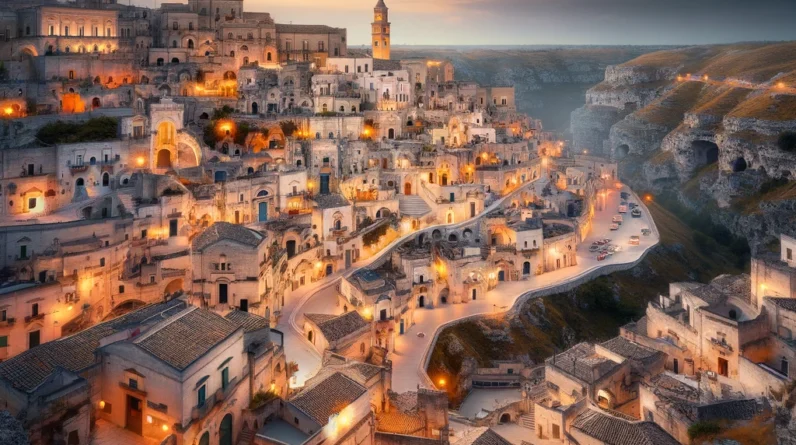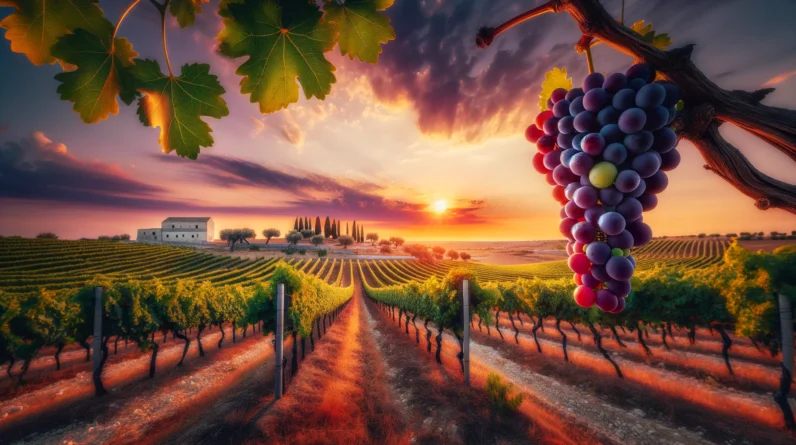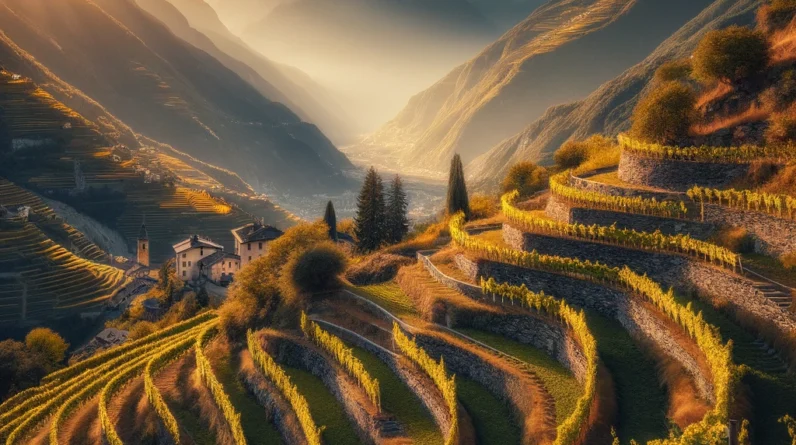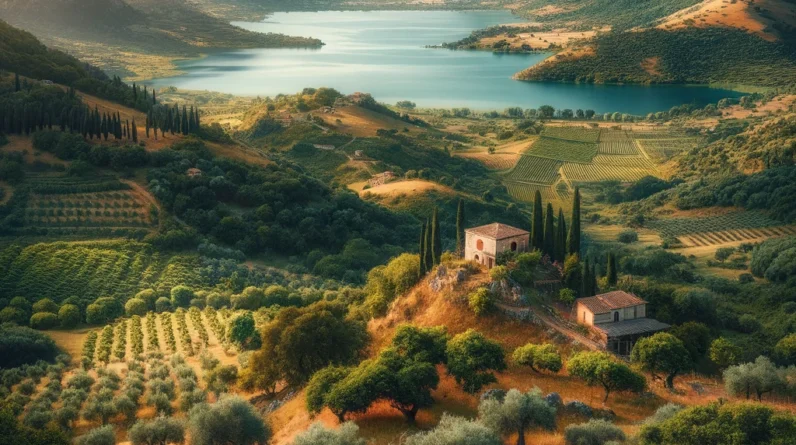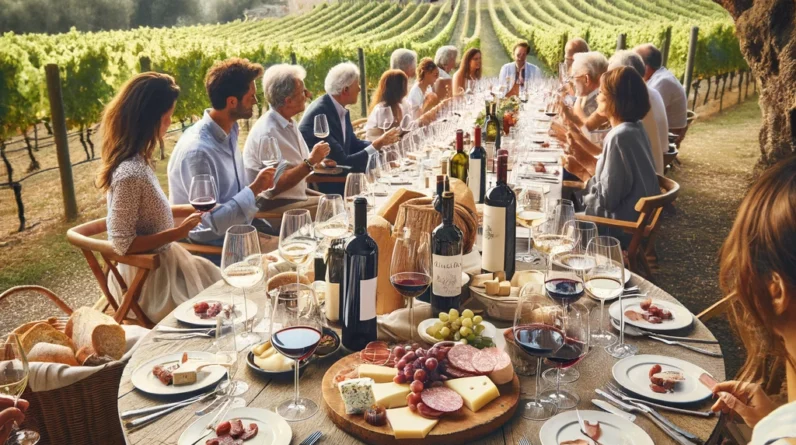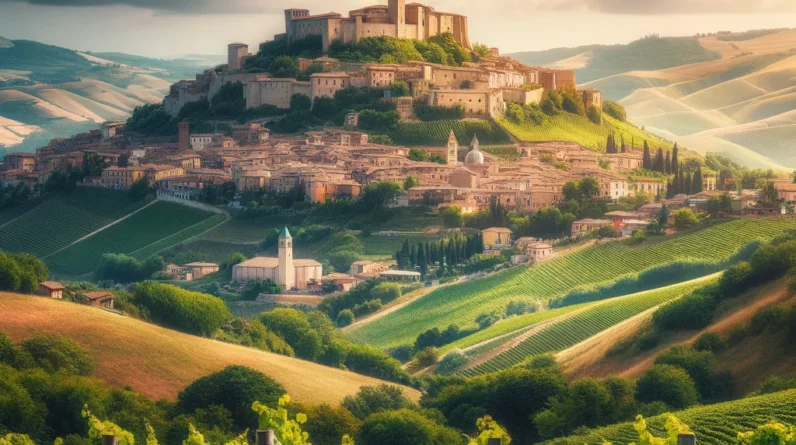
Exploring the Hidden Gem of French Winemaking: The Wines and Vineyards of Cotes de Bourg
Welcome to a journey through the enchanting world of Cotes de Bourg, a hidden gem in the illustrious winemaking landscape of Bordeaux, France.
Often overshadowed by its more famous neighbors, this region is a haven for those who seek to uncover the secrets of authentic French viticulture.
Steeped in history and blessed with a unique terroir, Cotes de Bourg offers a fascinating exploration into the world of wines.
From the velvety reds that dance on the palate to the picturesque vineyards that sprawl across rolling hills, this region is a testament to the art and passion of winemaking.
Join us as we delve into the heart of Cotes de Bourg, uncovering its wines, vineyards, and the rich tapestry of experiences it offers to enthusiasts, tourists, and connoisseurs alike.
Prepare to be captivated by the allure of this lesser-known, yet utterly remarkable corner of the wine world.

Wine Discovery and Appreciation
Cotes de Bourg, nestled in the Bordeaux region of France, is a treasure trove for wine enthusiasts.
The wines here primarily feature Merlot and Cabernet Sauvignon, offering rich, full-bodied reds with a distinctive character.
The region’s microclimate and proximity to the Gironde estuary create a unique terroir, leading to wines with complex flavors and aromatic intensity.
Exploring these wines is like taking a sensory journey through notes of ripe berries, subtle oak, and hints of earthiness.
The Cotes de Bourg region, located on the right bank of the Dordogne river where it meets the Gironde, is renowned for its red wines, which are typically medium-bodied and tannic with strong red
fruit aromas.
The primary grapes used in the Cotes de Bourg are Merlot, Cabernet Sauvignon, Cabernet Franc, and Malbec.
These grapes contribute to the unique flavor profile of the region’s wines.
A limited production of dry white wine is also present in the area.
The white Bordeaux wines from Cotes de Bourg are less common but include grapes such as Sauvignon Blanc, Muscadelle, and Semillon, with a notable presence of Colombard and Ugni Blanc.
The Cotes de Bourg region is unique for its significant use of Malbec, which accounts for a considerable portion of the vine plantings.
This focus on Malbec is a distinctive feature of the area, setting it apart from other Bordeaux regions.
Grapes of Cotes de Bourg Region
| Grape Variety | Flavor Profile | Use in Cotes de Bourg | Type |
|---|---|---|---|
| Merlot
| Soft and velvety, with flavors of plums, black cherries, and sometimes cocoa | Dominant in red wines | Red |
| Cabernet Sauvignon
| Black currant, with overtones of blackberry and mint, and oak aging adds complexity | Common in blends | Red |
| Cabernet Franc
| Lighter than Cabernet Sauvignon, with flavors of strawberries, raspberries, and sometimes green bell pepper | Often blended with Merlot and Cabernet Sauvignon | Red |
| Malbec
| Dark and robust, with flavors of blackberry, plum, and black cherry, often with a smoky finish | Notable presence, adds complexity to blends | Red |
| Sauvignon Blanc
| Crisp and acidic, with flavors of lime, green apple, passion fruit, and white peach | Used in white Bordeaux wines | White |
| Muscadelle
| Floral and grapey, with a slightly sweet profile | Used in white Bordeaux wines | White |
| Semillon
| Full-bodied, with flavors of lemon, peach, and sometimes honey when aged | Used in white Bordeaux wines | White |
| Colombard
| Crisp and light, with flavors of lemon, apple, and sometimes tropical fruits | Less common, used in white Bordeaux wines | White |
| Ugni Blanc
| High acidity, with subtle flavors of citrus and white fruits | Used in white Bordeaux wines | White |
Each grape variety contributes its unique flavor and character to the wines of Cotes de Bourg, creating a diverse range of wines that reflect the region’s rich viticultural heritage.
Vineyard Information
The vineyards of Cotes de Bourg boast a rich history, dating back to Roman times.
They span over 4,000 hectares, with many family-owned estates passing down winemaking traditions through generations.
The clay-limestone soil plays a crucial role, imparting a unique minerality to the wines.
Vineyard tours often reveal sustainable practices and innovative techniques that marry tradition with modernity.
Some key vineyards and chateaux in the Cotes de Bourg include Roc de Cambes, Chateau Bone, Clos Des Moiselles, Fougas Maldoror, and Chateau Mercier.
Roc de Cambes, in particular, stands out as one of the best in the region.
| Vineyard | Notable Features |
|---|---|
| Chateau Roc de Cambes
| Known for high-quality wines, Roc de Cambes is led by François Mitjavile, also owner of Tertre Roteboeuf in St. Emilion. |
| Chateau du Bousquet
| Renowned for its traditional winemaking methods and exceptional red wines. |
| Chateau de la Grave
| Offers a range of wines, including the notable Caractere. Known for its beautiful estate and quality wines. |
| Chateau Brulesecaille
| Esteemed for its robust red wines, this vineyard is a staple in the region for its consistent quality. |
| Chateau de Cots
| Popular for its picturesque landscape and quality wine production, particularly red wines. |
| Chateau De l’Hurbe
| Known for a variety of wine styles, combining traditional and modern winemaking approaches. |
| Chateau Mercier
| Offers a diverse range of wines, known for both red and white Bordeaux varieties. |
| Clos Des Moiselles
| This vineyard stands out for its artisanal approach and exceptional red wines. |
| Fougas Maldoror
| Renowned for its organic and biodynamic winemaking practices, producing distinct and flavorful wines. |
Identity of Cotes de Bourg
The Côtes de Bourg wine region, located in the Bordeaux area of France, is renowned for its rich history and unique terroir.
This region is situated around the small town of Bourg-sur-Gironde, near the confluence of the Dordogne and Garonne rivers.
Its viticulture dates back to the 2nd century when the Romans first planted vines, appreciating the area’s ideal conditions for grape cultivation.
Terroir
The terroir of Côtes de Bourg is characterized by a diverse and rich soil composition, predominantly made up of clay and limestone.
This region also features a unique mosaic of sand and gravel in areas around Pugnac.
The influence of the Atlantic Ocean and the Gironde estuary plays a crucial role in the region’s temperate climate.
These factors contribute to the distinctive expression of the terroir in the wines produced here.
The region enjoys additional sunlight, slightly less extreme temperatures, and lower rainfall compared to Bordeaux, enhancing the quality of the grapes grown.
Grapes and Wines
Côtes de Bourg is primarily known for its Merlot-based red wines, which exhibit a garnet color and are often blended with Cabernet Sauvignon, Cabernet Franc, and sometimes Malbec.
The red wines from this region are recognized for their balanced structure and rich fruit aromas.
Although red wines dominate, the region also produces a small amount of white wine, primarily blended from Sauvignon Blanc, Semillon, Muscadelle, and Colombard grapes.
It’s noteworthy that Côtes de Bourg is one of the few Bordeaux appellations cultivating Colombard and Ugni Blanc vines.
Winemaking
The region is home to approximately 400 winemakers, with a significant number being family-owned, independent chateaux.
These winemakers blend tradition and innovation, producing wines that can be enjoyed young but also have the potential for aging, showcasing the versatility of Bordeaux’s value wines.
The Côtes de Bourg wine region is a testament to the enduring legacy of French winemaking, combining centuries-old traditions with a terroir that distinctly influences the flavor and quality of its
wines.
This region offers a unique glimpse into the diversity and richness of Bordeaux’s wine landscape.
Historical Roots
The region has been producing wine since Roman times, leveraging its strategic location near the port of Bourg for wine trade.
This long history influences the traditional winemaking practices still observed today.
Biodynamic Winemaking
Recently, there has been a shift towards biodynamic methods of winemaking in the region.
Approximately 25% of the wines produced in Cotes de Bourg are now organic, indicating a move towards more sustainable and environmentally friendly practices.
Soil and Climate Considerations
Winemakers in Cotes de Bourg carefully select grape varieties based on the soil and climate of the region.
The soils are predominantly clay and limestone, with significant proportions of sand and gravel in some areas.
This diverse soil composition, combined with the region’s moderate climate influenced by the Atlantic Ocean, plays a crucial role in the cultivation of grapes and the characteristics of the wines
produced.
Grape Variety Selection
The choice of grape varieties is tailored to the unique terroir of the region.
Merlot is the major red grape variety, accounting for about 65% of the total red grape production.
For white wines, Sauvignon Blanc is widely cultivated, along with other varieties like Colombard, Semillon, Muscadelle, and Sauvignon Gris.
Diverse Winemaking Styles
The region’s winemakers produce a range of wine styles, from robust and traditional reds to more modern, fruit-forward wines.
This versatility is a result of both the varied terroir and the adaptive winemaking techniques.

What is So Uniques about Cotes de Bourg?
Cotes de Bourg wines are special for several reasons that make them stand out in the diverse world of Bordeaux wines.
Historical Significance
The Cotes de Bourg is one of the oldest wine-producing regions in France, with its viticultural history dating back to Roman times.
This long-standing tradition has contributed to the region’s deep-rooted winemaking expertise and heritage.
Unique Terroir
The region’s terroir is predominantly composed of clay and limestone soils, with variations of sand and gravel.
This diversity leads to the production of wines with distinct and complex flavor profiles.
The Cotes de Bourg benefits from its location near the confluence of the Dordogne and Garonne rivers and the influence of the Atlantic Ocean, resulting in a microclimate that’s favorable for grape
cultivation.
Grape Varieties
Merlot is the dominant red grape variety in Cotes de Bourg, accounting for about 65% of total red grape production.
This is complemented by Cabernet Sauvignon, Malbec, and Cabernet Franc.
For white wines, Sauvignon Blanc is the most widely cultivated, along with Colombard, Semillon, Muscadelle, and Sauvignon Gris.
Notably, the region has the highest concentration of Malbec in all of Bordeaux.
Wine Characteristics
The red wines from Cotes de Bourg are known for their fruity and easy-drinking style.
They are predominantly Merlot-based, giving them a garnet color and a wide spectrum of flavors ranging from dry and fruity to sweet.
The region also produces a limited amount of dry white Bordeaux wine, known for its unique profiles.
Winemaking Practices
Many wineries in Cotes de Bourg have begun adopting biodynamic methods, contributing to the production of high-quality, sustainable wines.
Diversity of Wineries
The region is home to around 400 winemakers, two-thirds of which are family-owned, independent chateaux.
This diversity ensures a wide range of wine styles and personal touches in winemaking.
Food Pairings
Cotes de Bourg wines pair wonderfully with a variety of foods.
Their red wines, for instance, complement barbecued beef, sausage de Vire, and grilled chicken, enhancing the flavors of these dishes.
These characteristics combine to make Cotes de Bourg wines not only a reflection of their rich terroirs but also a testament to the region’s commitment to quality and tradition in winemaking.

Tourism and Visits
Wine tourism is vibrant in Cotes de Bourg.
Many vineyards offer guided tours and tastings, allowing visitors to experience the winemaking process up close.
Some estates provide lodging options, ranging from rustic bed and breakfasts to luxurious stays.
A visit during the harvest season is particularly magical, offering a chance to participate in grape picking and wine festivals.
While visiting the Cotes de Bourg region, you’ll find a variety of special places and attractions that offer a glimpse into the area’s rich history, beautiful landscapes, and wine culture.
Medieval Town Center of Bourg
Bourg itself is a medieval village, known for its well-preserved town center.
Visitors can stroll through cobbled streets, admire ancient stone houses, and explore the citadel park.
The town’s historical significance and charming architecture make it a must-visit location.
Vineyards and Châteaux
The Cotes de Bourg is famous for its vineyards.
Many local vineyards and châteaux offer wine tastings and tours, allowing visitors to experience the region’s renowned wines firsthand.
This is a perfect opportunity to learn about the wine production process and taste some of the best wines the region has to offer.
Natural Scenery
The region, known as the “Little Switzerland of Gironde,” is set in a beautiful natural area with hills, valleys, rivers, and marshes.
It’s ideal for outdoor activities like hiking, cycling, or simply enjoying the picturesque landscape.
Museum of Horse-Drawn Carriages and Underground Passageways
Bourg houses a museum dedicated to horse-drawn carriages, as well as intriguing underground passageways and troglodytic vats from World War II.
These attractions provide a unique insight into the historical and cultural aspects of the region.
Local Cuisine
Don’t miss the opportunity to taste the local cuisine.
The region is known for its traditional dishes like estuary prawns, meat specialties, and the Figue de Bourg confection.
Local restaurants and Sunday morning markets are great places to sample South-Western French gastronomy.
Quai des Brocs in Bourg en Gironde
This location specializes in antiques and second-hand products, perfect for those who love unique finds and historical treasures.
Musée de la Voiture a Cheval
This museum offers a fascinating look at the history and evolution of horse-drawn carriages, adding another layer to your cultural exploration of the region.
These attractions, combined with the region’s wines and gastronomy, make Cotes de Bourg a remarkable destination for those interested in history, nature, and the culinary arts.

Practical Tips on Visiting the Cotes de Bourg Region
When visiting the Cotes de Bourg region, here are some practical tips to enhance your experience.
Plan Your Visits
Many vineyards and wineries in the region require advance booking for tours and tastings.
Check their websites or contact them directly to schedule your visit.
Transportation
Renting a car is often the best way to explore the region, as it allows for flexibility and access to more remote locations.
Remember to designate a driver if you plan on wine tasting.
Accommodation
Consider staying in local bed and breakfasts or boutique hotels to get a more authentic experience of the region.
Book in advance, especially during peak tourist seasons.
Local Cuisine
Don’t miss out on trying local dishes and specialties in the region’s restaurants.
Pairing local cuisine with Cotes de Bourg wines can be a delightful experience.
Weather Preparedness
Check the weather forecast and dress appropriately.
The region can have varied weather, so it’s wise to bring layers.
Language
While many people in the tourism industry speak English, learning a few basic phrases in French can enhance your interactions with locals.
Cultural Etiquette
Respect the local culture and traditions.
In wine tastings, it’s not necessary to finish every glass.
It’s acceptable to spit wine after tasting, especially if you’re visiting multiple wineries.
Local Markets and Shops
Visit local markets and shops for unique souvenirs and to support local artisans.
Stay Connected
Ensure you have a working mobile phone to use for navigation and in case of emergencies.
Consider getting a local SIM card for internet access.
Enjoy Responsibly
Always drink responsibly, especially when driving is involved.
The region is best enjoyed when you can fully appreciate the beauty and flavors it offers.

Wine Purchasing
For those looking to purchase Cotes de Bourg wines, options abound.
Many vineyards sell directly to visitors.
Online, numerous retailers and specialty wine shops offer a wide selection, catering to various budgets.
Look for vintages known for exceptional quality, like the acclaimed years of 2009 and 2010, which are great for both drinking now and aging.
The best vintages in the Cotes de Bourg wine region are known for their exceptional quality and are highly sought after by wine enthusiasts. These vintages include:
2022
2021
2020
2019
2018
2017
2016
2015
2012
2010
2009
2008
2005
2001
2000
Each of these vintages represents a year when the grape harvest and winemaking conditions were particularly favorable, resulting in wines of outstanding quality and character.
Wine collectors and connoisseurs often seek out these vintages for their cellars due to their aging potential and the depth of flavors they offer.
Cotes de Bourg wines represent an attractive investment opportunity.
While not as pricey as some Bordeaux counterparts, these wines can show excellent aging potential, particularly in good vintages.
The region’s growing reputation means that well-chosen bottles might appreciate in value over time, making them a smart addition to an investment portfolio.

Foods of Cotes de Bourg
In the Cotes de Bourg region, which is renowned for its vineyards and wine production, the local cuisine offers a delightful array of dishes that pair beautifully with the region’s wines.
Some special dishes that are integral to the region’s gastronomic landscape include:
Barbecued Beef Hamburger
This is a classic American dish that has become popular in the region.
A hamburger patty topped with barbecue sauce and served on a bun, this dish pairs well with the robust red wines of Cotes de Bourg.
Sausage de Vire
A traditional French sausage from Normandy, Sausage de Vire is made with pork and bacon, seasoned with salt and pepper, and stuffed into natural gut casings.
The sausage is dried for at least two weeks before it can be eaten, usually by frying or grilling.
The rich flavors of this dish complement the red wines of the region.
Grilled Chicken
A versatile and healthy option, grilled chicken is seasoned simply with salt and pepper and cooked over an open flame or under a grill.
The lean protein and subtle flavors of grilled chicken make it an excellent pairing for both the red and white wines of Cotes de Bourg.
Additionally, the Bourg region is famous for its traditional cuisine, which includes estuary prawns and meat dishes.
A notable local confection is the Figue de Bourg, made from chocolate, figs, and marzipan.
These dishes reflect the area’s culinary heritage and are a testament to the rich gastronomy of the region.
These dishes not only showcase the local produce and culinary skills but also highlight the region’s ability to create food that perfectly complements its wines.
Whether you’re enjoying a robust red or a crisp white from Cotes de Bourg, these dishes will enhance your wine-tasting experience.
The Cotes de Bourg region offers a rich tapestry of experiences, from the depth and diversity of its wines to the scenic beauty of its vineyards.
Whether you’re a casual wine drinker, a serious collector, or a passionate student of viticulture, this region has much to offer.
It’s a world where tradition meets innovation, and every glass tells a story of the land, the climate, and the people who pour their hearts into every bottle.
FAQs:
Q: What is the Cotes de Bourg region known for?
A: The Cotes de Bourg region, located in Bordeaux, France, is renowned for its full-bodied, rich red wines primarily made from Merlot, along with Cabernet Sauvignon, Cabernet Franc, and Malbec.
It also produces a smaller quantity of white wines.
Q: What types of soil are found in Cotes de Bourg?
A: The region is characterized by diverse soils, predominantly clay and limestone, with patches of sand and gravel.
This diversity contributes significantly to the unique flavor profiles of its wines.
Q: Can you visit vineyards in the Cotes de Bourg region?
A: Yes, many vineyards in Cotes de Bourg offer tours and tastings.
Visitors can learn about the winemaking process and sample wines directly from the producers.
Q: What grapes are used in Cotes de Bourg white wines?
A: While less common than reds, Cotes de Bourg white wines are typically blended from Sauvignon Blanc, Semillon, Muscadelle, and sometimes Colombard and Ugni Blanc.
Q: Are Cotes de Bourg wines suitable for aging?
A: Yes, while these wines can be enjoyed young, many have the potential to age well, particularly those from good vintages.
This aging potential varies based on the wine’s composition and the vintage.
Q: What food pairs well with Cotes de Bourg wines?
A: Cotes de Bourg red wines pair excellently with red meats, grilled dishes, and hearty stews.
The white wines are a good match for seafood, poultry, and lighter fare.
Q: Is the Cotes de Bourg region good for wine tourism?
A: Absolutely. The region’s picturesque landscapes, rich history, and diverse vineyards make it an ideal destination for wine enthusiasts and tourists.
Q: How does the climate of Cotes de Bourg influence its wines?
A: The region benefits from a temperate climate influenced by the Atlantic Ocean and the Gironde estuary, leading to more sunlight, moderated temperatures, and optimal growing conditions for
vines.

Experience Effortless Elegance with Our Premium Electric Wine Set
🍷 Open and Preserve Your Favorite Wines Like Never Before! 🌟
Welcome to a new era of wine enjoyment with our state-of-the-art Electric Wine Opener and Preserver Set. Designed for the modern wine enthusiast, this set combines functionality with style, transforming the way you enjoy your favorite bottles.
🔹 What’s Included?
- Electric Wine Opener: Uncork your bottles with ease and sophistication.
- Vacuum Preserver: Prolong the life of your wines, ensuring each glass is as fresh as the first.
- Foil Cutter & Two Bottle Stoppers: Complete your wine opening and preserving experience with these essential accessories.
🏡 Set against a Cozy Home Backdrop with a Well-Stocked Wine Rack, our electric wine set is the perfect addition to any kitchen or home bar. Its sleek stainless steel design is not just about looks; it’s about bringing a new level of convenience and elegance to your wine routine.
💎 Why Choose Our Wine Set?
- Sleek and Modern Design: Complements any home decor and speaks volumes of your taste.
- Easy to Use: Both novices and connoisseurs can enjoy the simplicity and efficiency of our wine set.
- Perfect for Entertaining: Impress your guests with a touch of tech-savvy elegance.
🍾 Enhance Your Wine Experience: Whether you’re relaxing after a long day or hosting an intimate gathering, our electric wine set is your partner in celebrating life’s moments.
🎁 A Thoughtful Gift for Wine Lovers: Surprise your friends and family with a gift that blends practicality with luxury.
🥂 Cheers to Effortless Wine Enjoyment!


